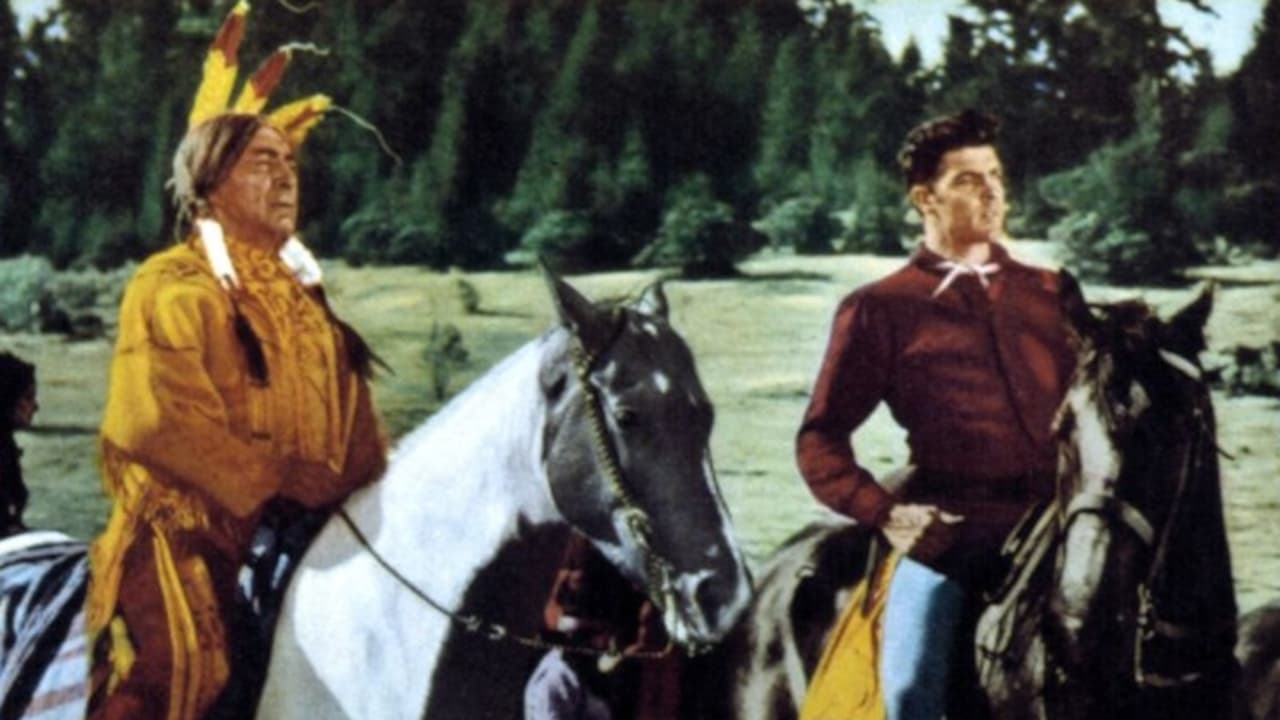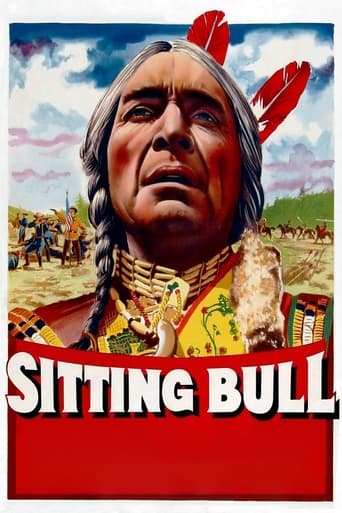

Fantastic!
... View MoreAbsolutely Fantastic
... View MoreA brilliant film that helped define a genre
... View MoreThe thing I enjoyed most about the film is the fact that it doesn't shy away from being a super-sized-cliche;
... View MoreSeeing "Sitting Bull" somewhat by accident on a "retro" TV channel, I sat through the whole thing, partly in dumbfounded amazement at another Hollywood butchering of history, partly in awe of a superlative cast trying really hard with such a poor script.During the movie, I was also struck by the lush score. Naturally, the TV network didn't have the decency to show all the credits, but to my ear it sounded like the outstanding work of Raoul Kraushaar -- and praise all the gods of technology for IMDb, I was right.In my opinion, he is a terribly under-rated composer. Even the cheapest Allied Artists movies attain the ranks of quality when he wrote the score.J. Carroll Naish as the title character is another under-rated actor. That is, he does not seem to be known among viewers although apparently he was never out of work. He almost always played some accented character, some Latin or European or, as in this case, "Indian" character. And he was almost always extremely believable.The rest of the cast, from the excellent Dale Robertson to the excellent John Hamilton, were almost uniformly perfect.
... View MoreSITTING BULL is a sluggish western about a cavalry major (DALE ROBERTSON) who is compassionate toward the Indians and must face insubordination for some of his actions against harsh superior officers.There's a traditional romance thrown into the mix, between a General's daughter (MARY MURPHY) and Robertson, with rival suitor WILLIAM HOPPER as another man interested in Murphy. J. CARROL NAISH is Chief Sitting Bull, who wants peace and refuses to put on his war paint although some members of his tribe are anxious to fight some of the white men's injustices. DOUGLAS KENNEDY is flamboyant and seriously miscast as the yellow-haired General Custer of the 7th Cavalry.It's handsomely produced in outdoor settings that look authentic, but the stilted dialog is handled indifferently by a lackluster cast of players. DALE ROBERTSON gives a leaden performance in the major role and he doesn't get much help from WILLIAM HOPPER or MARY MURPHY, who in real life, married Robertson after this film. Their chemistry on film fails to register and her motivations throughout are sketchy, to say the least.A major plot development has President Grant helping Robertson when he is condemned for helping Chief Sitting Bull and there are a few other subplots before we get to the battle at Little Big Horn. Robertson's compassion for the redskins almost lands him in big trouble toward the end, until Chief Sitting Bull intercedes just before he's about to be executed for treason by a firing squad.Good western should have been much better but is marred by dull performances and uninspired direction of Sidney Salkow. The director unwisely allowed few close-ups of his cast throughout the film, depending solely on medium shots for most of the scenes, probably because he was new at the CinemaScope process. Since most of the cast underacts considerably, this is a real drawback in the more intimate moments.
... View MoreOkay, I admit it, we haven't finished it yet; we're somewhere into the second hour. It was packaged as the back half of a dollar-store DVD with "Custer" on the other side, so we bought it on a whim to see how badly you could repackage an old (probably public-domain) film in modern technology.The answer is: pretty badly. Watching this film is a challenge to determine which part is the filmmakers' fault (e.g. wooden acting; stilted dialogue) and which part is the result of an aging film that no one can be bothered to handle properly (e.g. a badly discolored old print; a truly horrendous pan-and-scan job of what was once an interesting-looking widescreen film).Of special note is the maddeningly constant, wall-to-wall musical background: cheesy weeping strings and such, non-stop, as if the filmmakers were terrified of having actual silence in the background once in a while. On the other hand, this _is_ how they liked to make films back then, so if you look at it as a period piece -- no, not as an example of life in the west, but as an example of what Hollywood churned out in the early '50s: the lighting, the acting, the hairstyles, etc. -- then it's actually interesting to watch... for a while, anyway.
... View MoreRight out of the gate, it probably would have been best if this film came with a warning to sit back and view it as the work of fiction that it is, rather than try to figure out which elements may or may not have been historically accurate. As it is, I'm ready to dismiss it entirely as a contrived piece of movie making that has little to recommend it.Of the figures presented, Chief Sitting Bull probably acquits himself most favorably, portrayed by veteran J. Carroll Naish. He's generally characterized as preferring peace, though from a pragmatic point of view, knowing that the next great war against the white man will probably wipe out his people, the seven great nations of the Sioux. His warrior chief Crazy Horse (Iron Eyes Cody) on the other hand, chomps at the bit to don the war paint and go on a tear. When a proposed meeting between Sitting Bull and President Grant (John Hamilton) fails to materialize, events converge to play out in a scenario that we now know as the Battle of Little Big Horn, but again, with great liberty taken with the known facts. Yes, Yellow Hair Custer (Douglas Kennedy) dies in battle, but this time around at least two men survive to report back to General Howell, along with the film's top billed Dale Robertson, as Captain Robert Parrish. Parrish escapes a firing squad for treason after leading the Sioux to safety after Little Big Horn (huh?), thanks to the intercession of Sitting Bull (double huh?).A lot of emphasis in the film is put on Sitting Bull's requirement that President Grant meet with him by the next full moon to consider a peace plan. As the time draws near, we see Sitting Bull on the final night looking skyward to the full moon with no word of the president. The very next moment he's walking in broad daylight to counsel with his war chiefs.I got a kick out of the opening credits, mentioning Iron Eyes Cody as "Technical Adviser and Indian Costumes"; in brackets he's called a "Famous T.V. Star". Speaking of costumes, both Sitting Bull and Crazy Horse are routinely shown in full regalia and war bonnet, though my limited knowledge of Indian custom tells me that full head dress was limited to rare occasions, so chalk up another one to poetic license.I guess it's fitting then that the movie humorously closes on what probably best describes it in a closing credit, though my copy may have been improperly cropped. There in big bold letters, it states "A Rank Product", distributed by United Artists - sadly, how true.
... View More